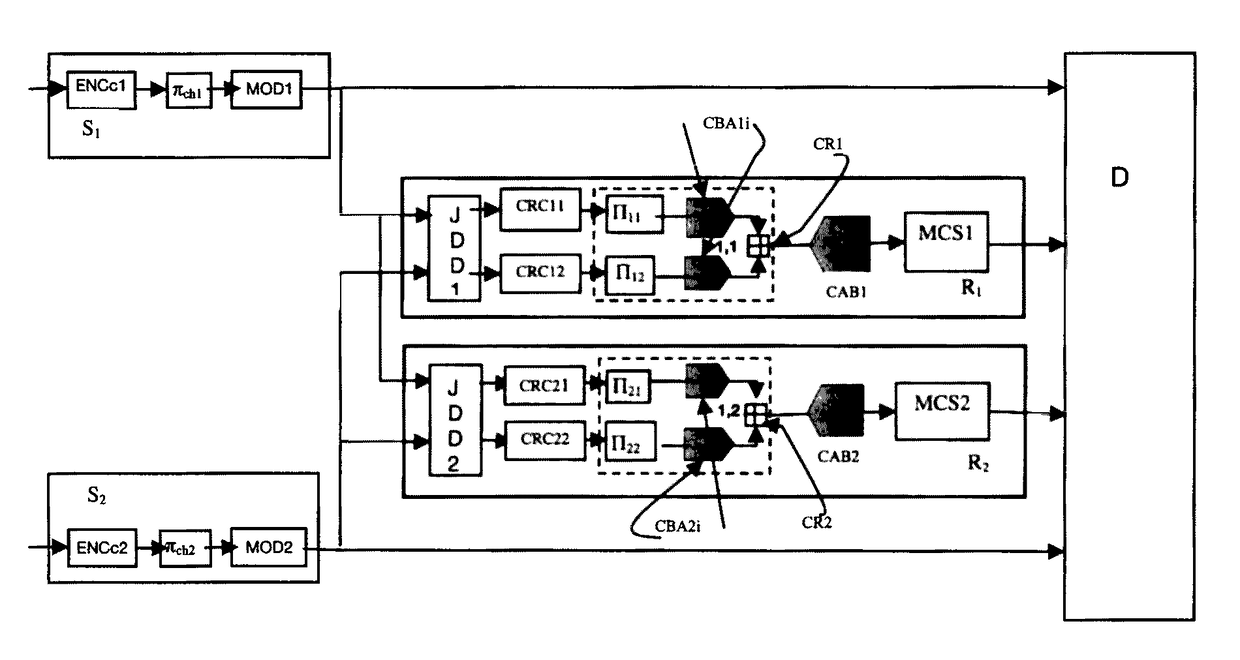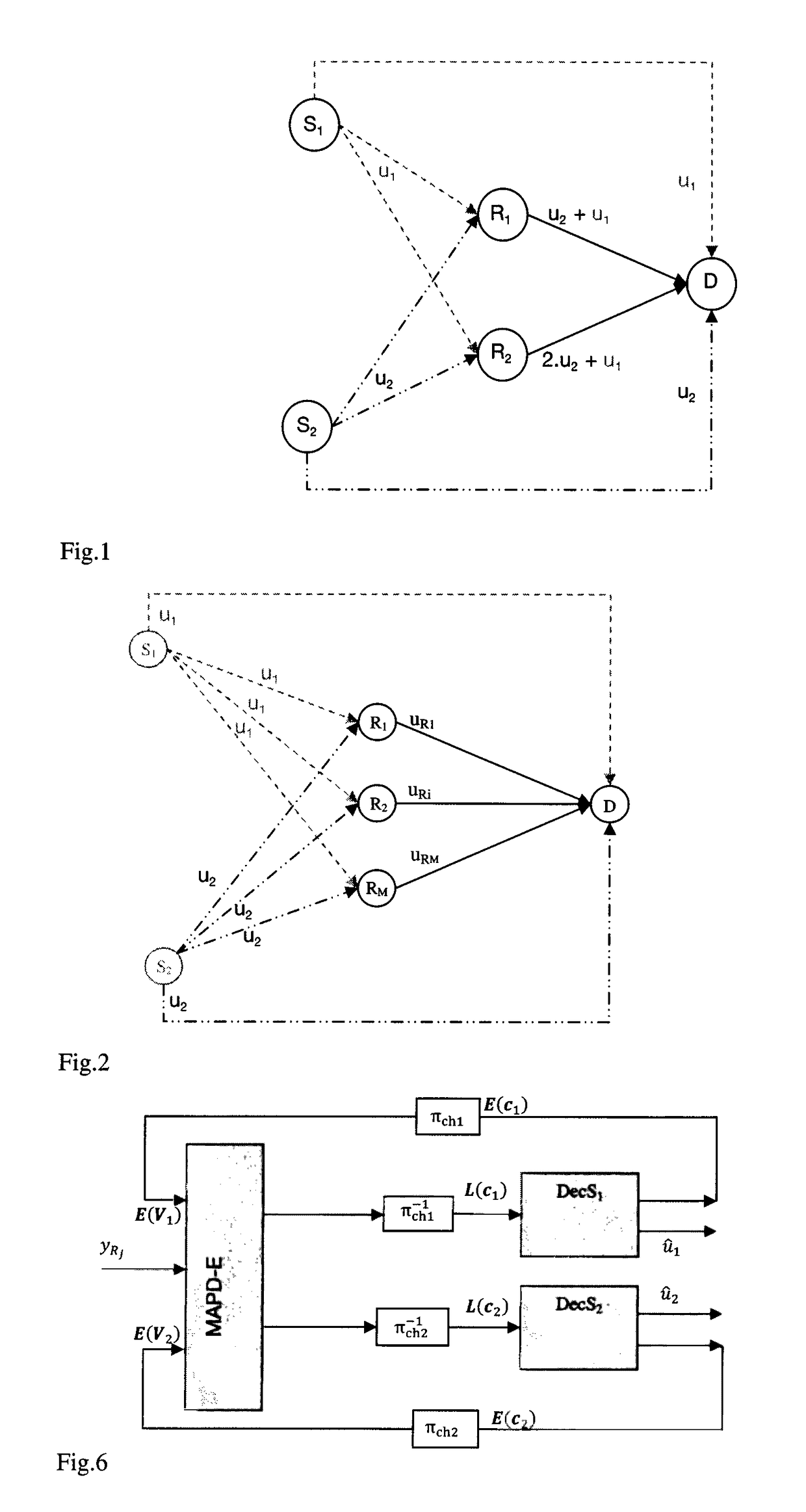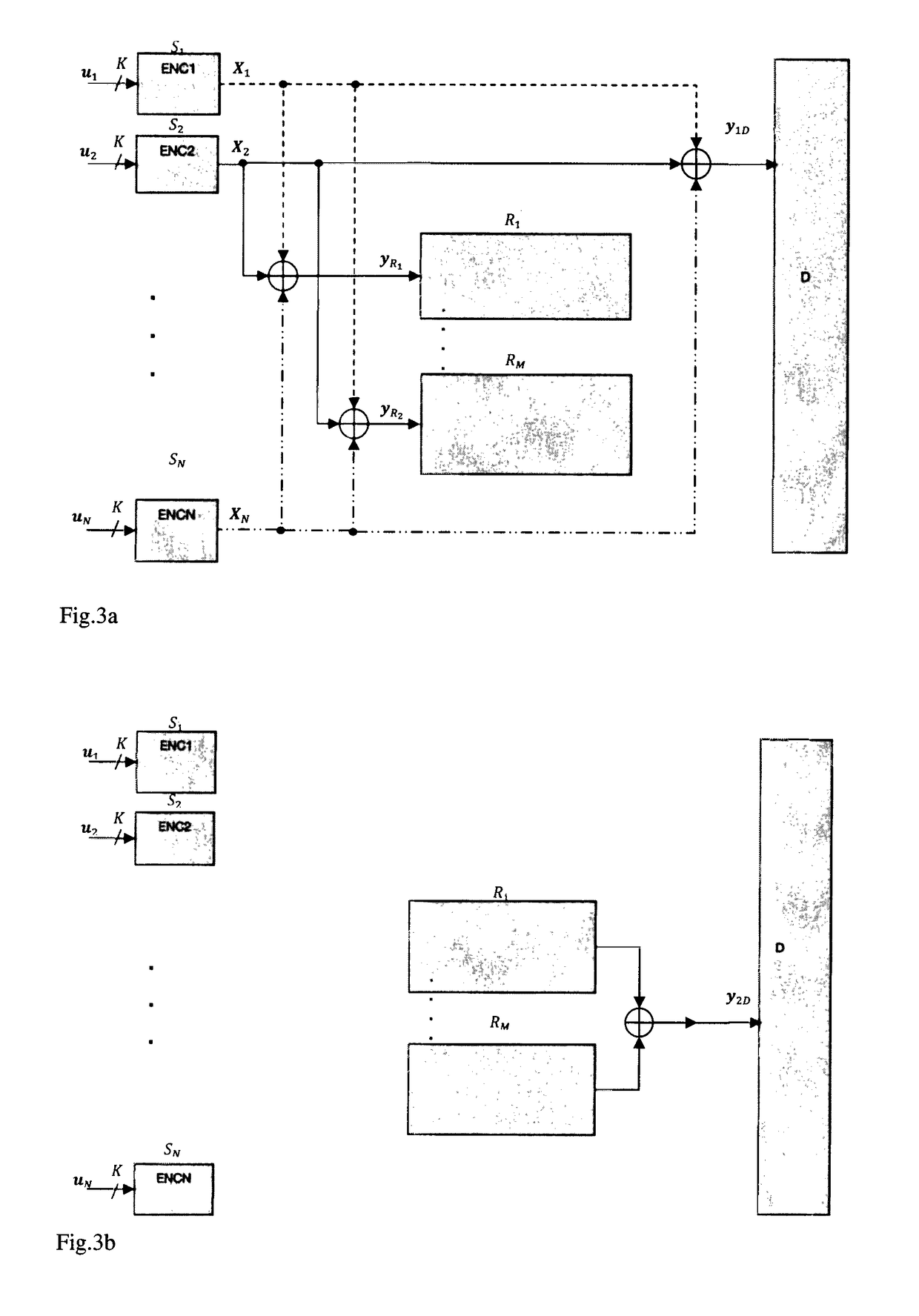Method of transmitting a digital signal for a semi-orthogonal MS-marc system, and a corresponding program product and relay device
a semi-orthogonal and digital signal technology, applied in the field of telecommunications, can solve the problems of difficult transmission channels of mobile networks, affecting the capacity of the system, and relatively mediocre transmission reliability
- Summary
- Abstract
- Description
- Claims
- Application Information
AI Technical Summary
Benefits of technology
Problems solved by technology
Method used
Image
Examples
Embodiment Construction
[0094]The following notation is used in this application.
[0095]All vectors use bold characters. A vector v has its kth element written [v]k, or vk.
[0096]Fq is the q-element Galois field, is the field of real numbers and is the field of complex numbers.
[0097]Matrices / tensors use capital letters in bold. If X is a matrix of dimensions N×M belonging to the field E, i.e. XεEN×M then xk denotes its kth column (k=1, . . . , M).
[0098]Functions use non-italic capital letters. A multi-dimensional function F is applied to input in the form of a matrix A of dimensions m×q, where each element ai,j (for all i=1, . . . , m and j=1, . . . , q) belongs to the set E, and it outputs a matrix B of dimensions n×p in which each element bi,j (for all i=1, . . . , n and j=1, . . . , p) belonging to the set G, such that F(A)=B written: F:Em×q→Gn×p.
[0099]The probability density of a complex random variable x with circularly symmetrical Gaussian distribution of mean μx and covariance σx2 is written: CN(μx,...
PUM
 Login to View More
Login to View More Abstract
Description
Claims
Application Information
 Login to View More
Login to View More - R&D
- Intellectual Property
- Life Sciences
- Materials
- Tech Scout
- Unparalleled Data Quality
- Higher Quality Content
- 60% Fewer Hallucinations
Browse by: Latest US Patents, China's latest patents, Technical Efficacy Thesaurus, Application Domain, Technology Topic, Popular Technical Reports.
© 2025 PatSnap. All rights reserved.Legal|Privacy policy|Modern Slavery Act Transparency Statement|Sitemap|About US| Contact US: help@patsnap.com



